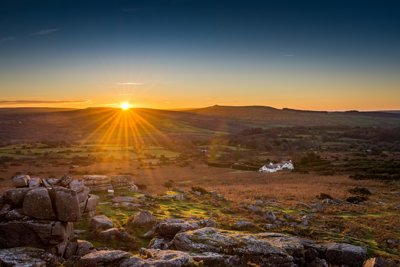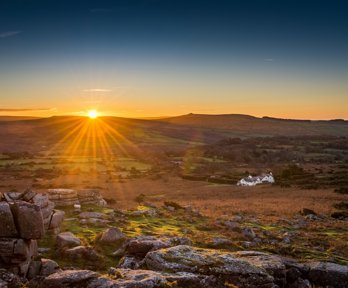Key words
-
Moorlands
-
Heathlands
-
Peat
-
Ecosystems
-
Pollination
-
Restoration
-
Management
-
National Parks
Summary
Rose Wilcox is currently undertaking research for a PhD at the University of Hull. The title of her study is:
-
Assessing the restoration of ecosystem services on moorland in the Peak District National Park: a network approach
She spent five months between April and August 2011 working in remote locations in the Peak District National Park, to explore the recovery of areas of moorland which had been affected by fires.
Peat moorlands are particularly susceptible to fire when they are dry. The absence of vegetation enables erosion to take place. The removal of peat is an issue for water quality, as these areas are also the high points of the watersheds of many of the UK’s major rivers.
Location
Rose worked on a total of 30 sample sites which were spread across five different treatments or states. They were all located on Bleaklow: an area of the Peak District National Park between Sheffield and Manchester, and one of the highest parts of the park.
The areas, along with the dates that they had been restored were:
-
Sykes Moor three - restored in 2005
-
Sykes Moor two - restored in 2005
-
Sykes Moor - restored in 2004
-
Shelf Moss - restored in 2004
-
Joseph Patch - restored in 2003
-
Shelf Moor two - restored in 2003
The controlled bare peat site which has not been restored is the area North of Bleaklow Summit and between Joseph Patch and Shining Clough. The reference/intact site that has not been restored because it was not damaged by the fires is the area near the grouse butts West of Joseph Patch.
For more information on the use of this area, visit the Moors for the Future website.
Aims
Once a heathland ecosystem has been damaged by fire, it can take many years to become re-established. Like any area of vegetation, relationships become established between the plants and the animals that inhabit them, and across the trophic levels that make up the network ecology.
Rose’s work is to explore the mechanisms for the restoration of pollination, and the extent to which this has been successful over time. As an area recovers from fire, it will also move through the stages of plant succession: a process which will have been arrested by the fire.
This is essential if the ecosystem is going to recover. The restored heathland network tends to have a different structure to the ancient heathland, with fewer interactions between the plants, bees and parasites that live on the bees.
Research techniques
-
Field collection of data on a number of plots, using one metre quadrats along a line transect
-
Observation over time
-
Systematic collection of insects, which are humanely killed, then swabbed for pollen and inspected for parasites
Outcomes
-
Investigate appropriate techniques for restoration, and the changes that are observed in areas of restored heathland
-
Assess the success of heathland restoration, in partnership with Moors for the Future
Key topics and themes
-
Management of an ecosystem which is fragile and has been damaged by fire
-
National Park management: the tension between allowing access for all, and conserving a fragile landscape
-
Plant succession/ecosystems
Key Questions
Has the moorland ecosystem been restored successfully?
Have the pollinators come back, and are they the same pollinators, doing the same job as before?
Other useful resources
About the author
Alan Parkinson worked for the Geographical Association as Secondary Curriculum Development Leader between 2008 and 2011, after teaching for over twenty years in Norfolk and Derbyshire. He developed the popular GeographyPages website in 2001, and received the Ordnance Survey Award for 'excellence in secondary geography teaching' from the RGS-IBG in 2008. He is currently a freelance author and geographer.
The researcher
Rose Wilcox is a PhD researcher at the University of Hull, following a BSc. In Aquatic Zolology. The funding has allowed work to progress which is part of a wider role in monitoring upland ecosystems. The work will also inform the production of a display at the Moorland Visitor Centre.


